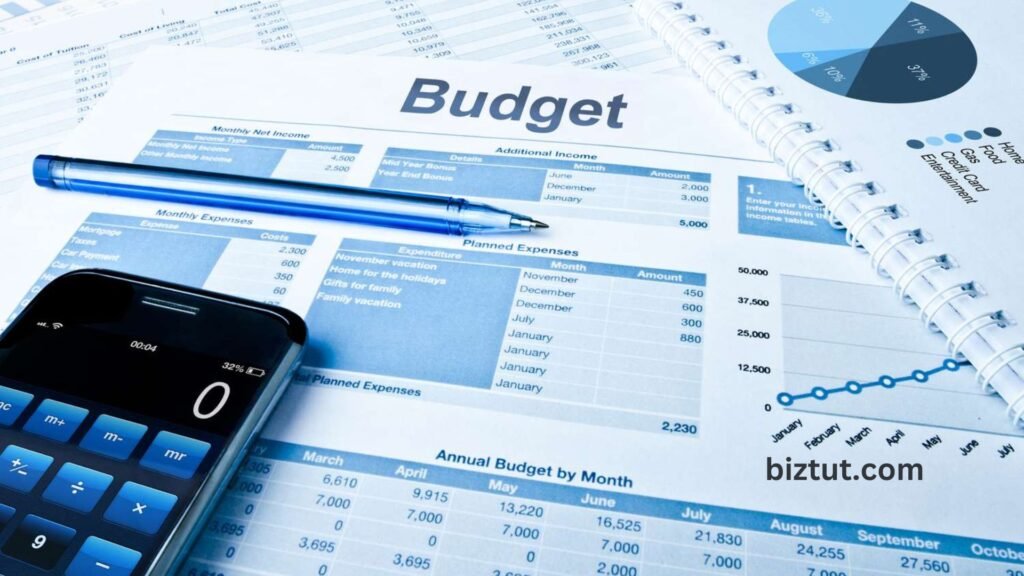If you want to boost your chances of running a successful small business, start by making a budget. A budget is a helpful tool that shows you how much money you have, what you’re spending, and what you’ll need in the future. It also helps you make smart decisions, like whether you can afford to hire staff, buy equipment, or where to cut costs to avoid cash flow problems.
A budget is especially important now, as many businesses are dealing with rising costs. In fact, 73% of small business owners in the 2024 Bank of America Business Owner Report said they’re worried about inflation, and 61% are concerned about the cost of commodities. Here’s how you can create a budget and use it to guide your decisions for today, tomorrow, and beyond.
What is a business budget?
A budget is basically a plan for how your business will spend its money based on your income and expenses. It shows you how much cash you have, helps you estimate what you’ll spend, and predicts your future earnings. With this information, you can make smarter decisions for your business. A budget covers a specific time period and acts as a tool to guide you in allocating resources toward the key goals in your business plan.
What are the benefits of creating a business budget?
Budgeting helps you manage your money more efficiently, track differences between your plans and actual spending, and adjust as needed. It’s a valuable tool for keeping your daily operations running smoothly and making sure you use your cash wisely so you don’t run into cash flow problems. A budget can also signal when it’s time to seek additional funding. Since debt is common in many businesses, budgeting helps you handle it with better control and planning.

A solid budget also prepares you for surprises. Sticking to it and building a cushion for emergencies can give you a stronger financial foundation.
Types of business budgets
When it comes to business budgets, it’s not just a one-time task. There are different types of budgets that can be useful depending on your business needs.
Master Budget
This budget brings together information from your financial statements, cash flow forecast, and overall financial plan into one document. It helps you keep an eye on your business’s financial health. Your management team can use it to plan actions to reach your goals. Many small businesses use spreadsheets for their master budgets, but budgeting software can help reduce errors.
Operating Budget
An operating budget outlines your expected revenue and expenses for a specific period. It’s like a profit and loss statement but focused on the future. This budget covers fixed costs (like rent), variable costs (like utilities), and non-operating expenses. Capital expenses, like buying a building, are usually not included. The operating budget shows if you’re staying on track with spending. It’s usually created at the start of the year, but you should update it regularly—monthly or quarterly—to keep up with your business’s financial status.
Capital Budget
A capital budget is used when your business plans to make a big purchase, like new equipment or technology that requires a large investment. It helps the finance team understand how the purchase will affect cash flow and plan ahead.
Cash or Cash Flow Budget
This budget estimates how money will flow in and out of your business over a certain period. It’s based on sales forecasts and production plans, as well as estimates of payables and receivables.
Labor Budget
If you’re hiring employees, this budget helps you plan for payroll, including regular staff and any temporary or seasonal workers you may need.
Each of these budgets serves a different purpose, but together they provide a comprehensive financial roadmap for your business.
Budgeting methods you can use

There are several ways to approach budgeting. Here are a few common methods:
Incremental Budgeting
This method starts with your current budget or actual performance and adjusts it slightly to account for changes, like rising costs. You typically use the inflation rate to fine-tune the numbers. The upside? It’s simple and easy to do.
Zero-Based Budgeting
With zero-based budgeting, you start from scratch. Every expense has to be justified before being added to the budget. This method is great for making sure your spending aligns with your business goals. It’s also helpful if you’re looking to cut costs since it doesn’t rely on past spending.
Activity-Based Budgeting
In this approach, you focus on the activities needed to hit your business targets. For example, if your goal is $5 million in revenue, you’d first figure out the steps to reach that number and then estimate the costs of those activities. It’s all about budgeting based on actions that lead to results.
Participative Budgeting
This method involves input from various levels of management, making it popular in larger small businesses. The process starts with lower management, then moves up to middle management, and finally gets approved by top management. The benefit? When everyone is involved in the budgeting process, they’re more likely to work together toward the same goals.
Each of these methods has its strengths, and choosing the right one depends on your business’s needs.

How to create a business budget
Creating a business budget involves a few simple steps:

- Calculate Your Revenue: Start by figuring out how much money your business brings in each month. If you’ve been in business for at least a year, look at your income over the past 12 months. If you’re new, research typical earnings in your industry to help estimate your revenue.
- Add Up Your Fixed Costs: These are your regular, unchanging expenses, like rent, salaries, and loan repayments.
- Determine Your Variable Costs: These can change from month to month and include things like utility bills, materials, labor costs, transaction fees, and commissions.
- Subtract Your Costs: Once you have your fixed and variable costs, subtract these from your total revenue. This tells you how much it costs to produce your product or service. The leftover amount is your net income—the money you have after all expenses and taxes. This is also what you can reinvest into growing your business.
It’s also smart to set aside a little extra money for unexpected expenses, like replacing equipment earlier than planned.
Now you’re ready to create your profit and loss statement! Just add up all your income and expenses for the month and subtract the expenses from your income. Ideally, you want the result to be a positive number, which means you’ve made a profit, not a loss.
There are many budgeting templates available online, and software like QuickBooks can make things even easier. These tools help simplify the process so you don’t have to start from scratch.
Also Read: 5 Strategies to Boost Social Media Engagement 2024
Using a budget to make better decisions
If you treat your budget like a regular resource, you’ll really see the benefits of your budgeting efforts. Make it a habit to check your budget often when you’re making spending decisions. It’s a great way to keep yourself grounded. If you planned to spend a certain amount and end up going over, you’ll need to explain why—even if it’s just to yourself. Staying disciplined can be tough, but it’s worth it. This approach will help your business grow now and in the future.





